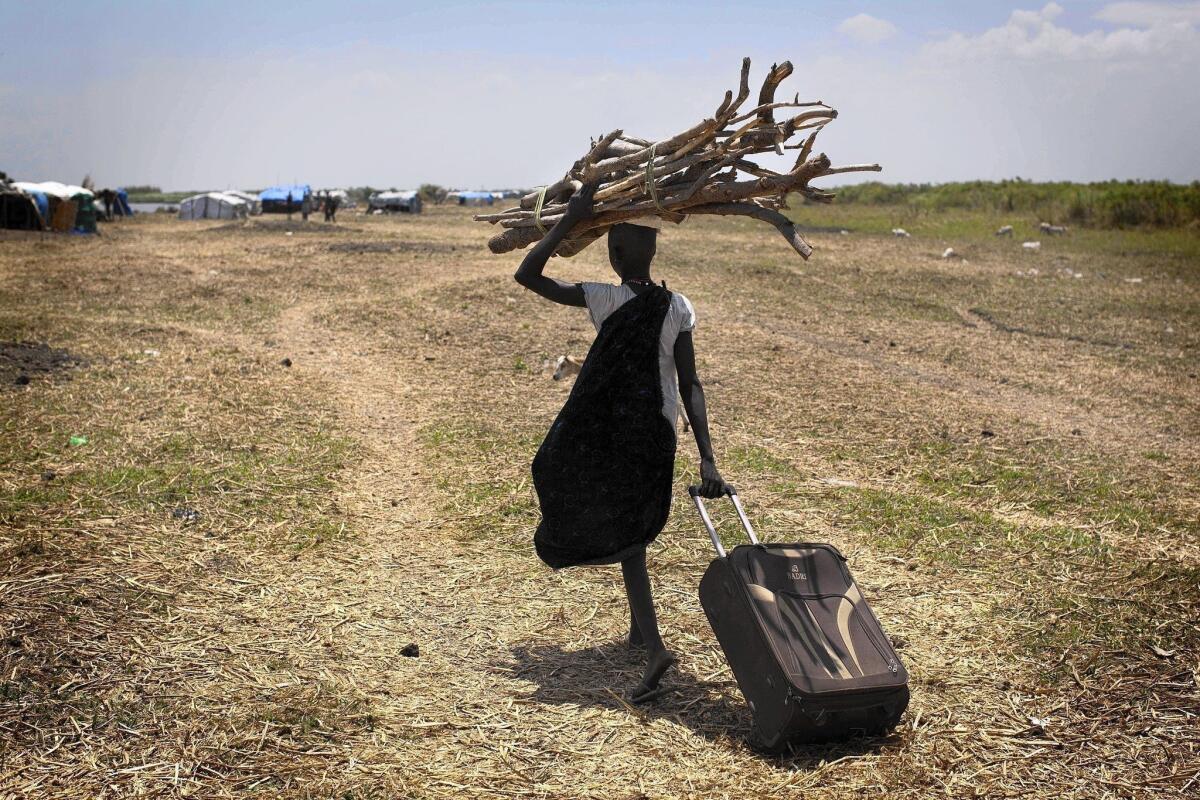Bangladesh women find liberty in hard labor
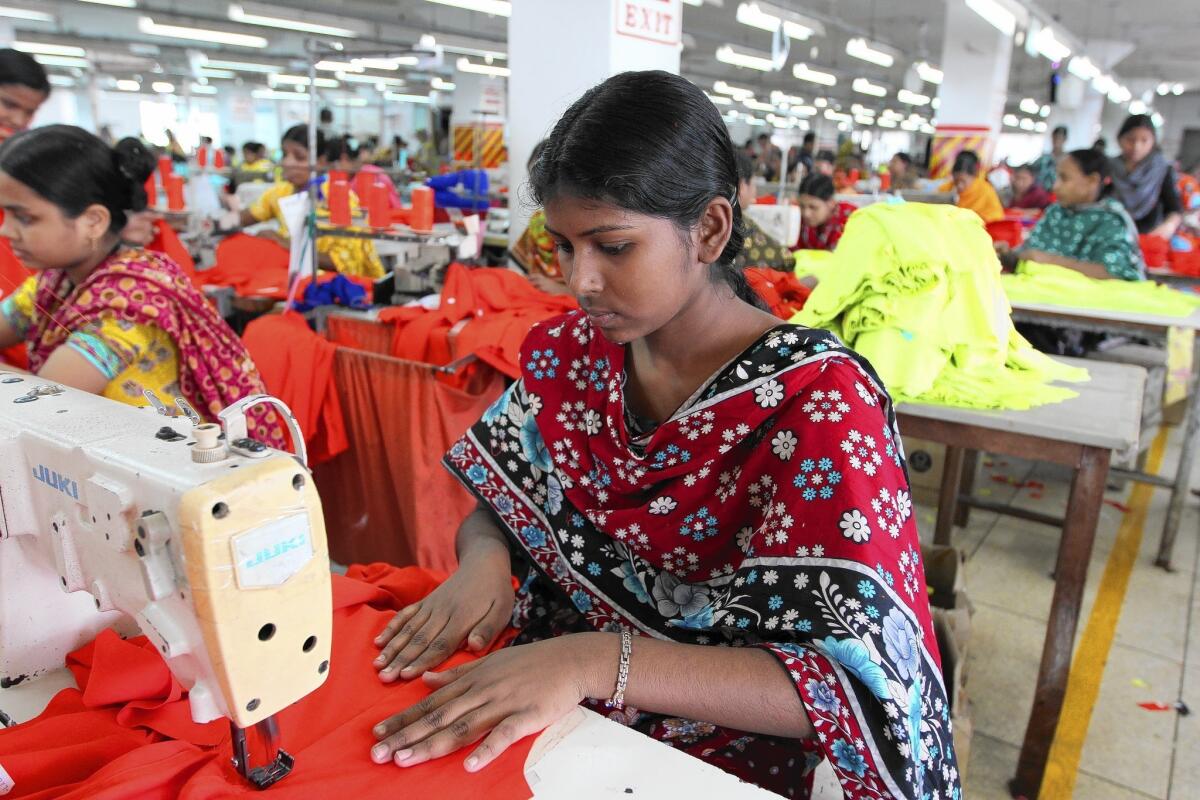
The garment factory workers toil for paltry wages. But such jobs have also afforded Bangladeshi girls a measure of independence in a traditional Muslim society.
- Share via
Mukhta Mollah deftly smooths the red fabric and guides it through a whirling sewing machine. She sews side seams on women's blouses bound for America. Eight hours a day or longer in this hot and sweaty factory. Six days a week.
On this day, like every workday, she will try to reach a target of 1,000 blouses.
Seamstresses sit all around her in rows that stretch across this factory floor crowded with 350 workers. Fluorescent lights buzz and blink overhead. Enormous fans nosily push around the stagnant air, which carries the familiar scent of new clothes.
It takes Mollah less than 30 seconds to complete her part of the blouse. A helper snips the thread ends and piles the garments into a bin to take to the next station. Mollah has long grown accustomed to the mind-numbing repetition, the unrelenting din, the glare, the heat.
She knows that she won't get rich; she sends nearly half of her $20-a-week wages home to her family. But she's grateful that the salary, no matter how small, gave her the means to escape her home village and the fate of her schoolgirl friends.
All of them were married before age 16. All have children of their own. All have moved in with their husbands' families and must get permission from their mothers-in-law to leave the house.
"For them, it's a cage," said Mollah, 19. "My life is much better than theirs because they have no freedom. When I go back to my village and see my friends, they ask me, 'Can you take us with you?'"
Bangladesh's garment industry has earned a reputation for harsh and sometimes lethal working conditions. An eight-story factory collapsed last April, crushing more than 1,100 workers. Six months earlier, a factory fire killed 112 people who could not flee because their bosses had locked the doors to keep them working.
Despite the horrific industrial accidents and accusations of labor abuses — such as forced workweeks of 80 hours — the picture of the underpaid and over-exploited garment worker gets more complicated when compared with other options available to women in this poor, traditional Muslim society. About 5,600 factories in Bangladesh employ more than 4 million people; 90% of the workers are female.
"It's not as dramatic of a transformation as a college education or launching a career," said Sajeda Amin, a sociologist and demographer who has studied the societal impact of the garment industry for the nonprofit Population Council in New York. But these jobs, she said, have opened a new pathway for teenage girls to make the transition from childhood to adulthood with a measure of independence.
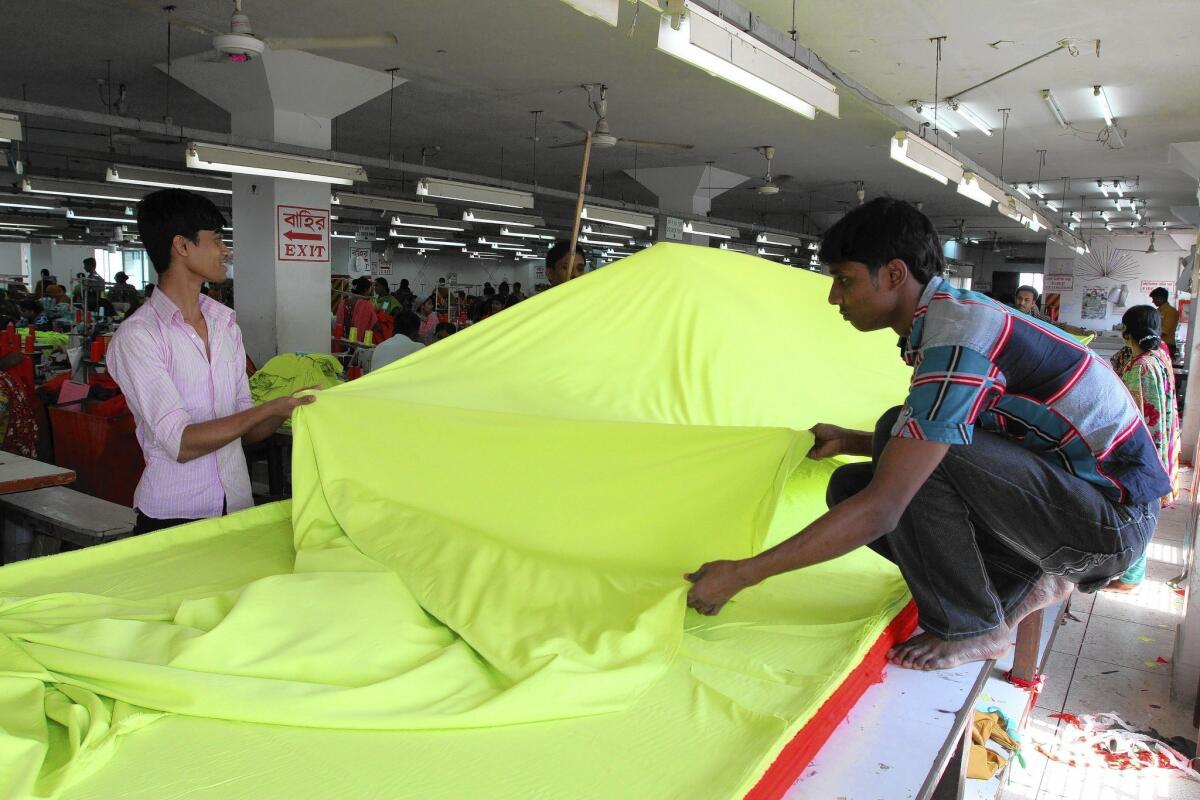
Beauty Garments Pvt. Ltd. in Dhaka is one of Bangladesh's 5,600 garment factories, which employ more than 4 million people.
Even labor activists in Bangladesh and the United States who chronicle cases of workers being intimidated and forced to work long hours agree that the garment industry has given young women opportunities to move from the margins to the center of society.
"It's fantastic that they have this common industry that has put women to work," said Charles Kernaghan, director of the Institute for Global Labor and Human Rights, based in Pittsburgh. Recent street protests in Dhaka, the Bangladeshi capital, by garment workers helped nudge the minimum wage to $68 a month, which he said equates to 33 cents an hour. The industry, Kernaghan said, must do more to provide a decent living wage and respect workers' rights.
The garment industry in Bangladesh is second only to China's. It draws workers largely from rural areas such as the tiny village of two dozen houses near the Indian border where Mollah grew up with three sisters. The eldest worked for two years in a garment factory before returning home to marry.
When their father, a rice farmer, fell ill and was unable to work, Mollah willingly took the factory job to help the family. She was 15 at the time, a year older than the legal minimum age for a factory worker.

It's lunchtime at Beauty Garments Pvt. Ltd., and Mollah spills out the door with most of the other 350 workers for the hourlong break. She meets up with three other young women — her roommates — as they are walking to their apartment.
All of them wear fashionable loose pants and tunics, called shalwar kameez, rather than the traditional flowing sari, making it easier for them to step over mounds of rubble and dirt piled alongside a deep trench in the road opened for sewer-line repairs.
Their two-bedroom flat is two blocks away; it is in a concrete structure with metal bars and shutters on the windows, but no glass panes.
I like it here, I make my own decisions. I can earn money and help my family.”— Kanchi Hazi
The four live in a 10-foot-by-12-foot room, with a ceiling fan and a bare light bulb. Two sleep on a double bed, two on a pad on the concrete floor. The women switch places every other week and split the $45-a-month rent.
The second bedroom is occupied by a young married couple, who also work at the factory, and their 6-year-old daughter.
All share a squat toilet, a porcelain-lined hole in the floor, and a common kitchen with a low stool and two gas burners that sit on the floor. They cook in the kitchen and eat in their room. A refrigerator stands near the kitchen door, but the four women cannot use it because it is owned by the young couple. Their water comes from a community spigot 20 steps outside their front door.
Mollah and her roommates show off their apartment with pride, even though road dust blows through the windows, forcing them to keep their clothes bundled in bags. The paint is peeling, but the floor is meticulously clean. Floral pattern curtains cover the windows' iron grating.
Kanchi Hazi, the more outgoing of the roommates who constantly makes the others laugh, said she considers the sleeping arrangements luxurious compared with those at the small house she shared with her parents, six sisters and two brothers.
The 24-year-old with a gap-toothed smile left her home village seven years ago to take this factory job. She sews pockets on blouses and works as many hours as she can get.
"I like it here," she said, arms akimbo, with fists on her hips. "I make my own decisions. I can earn money and help my family."
With overtime, she makes $78 a month and sends half of it home. Her father, a day laborer, cannot always find work. Every few months, she makes the three-hour bus ride home to visit her family. She gets mixed reactions from villagers.
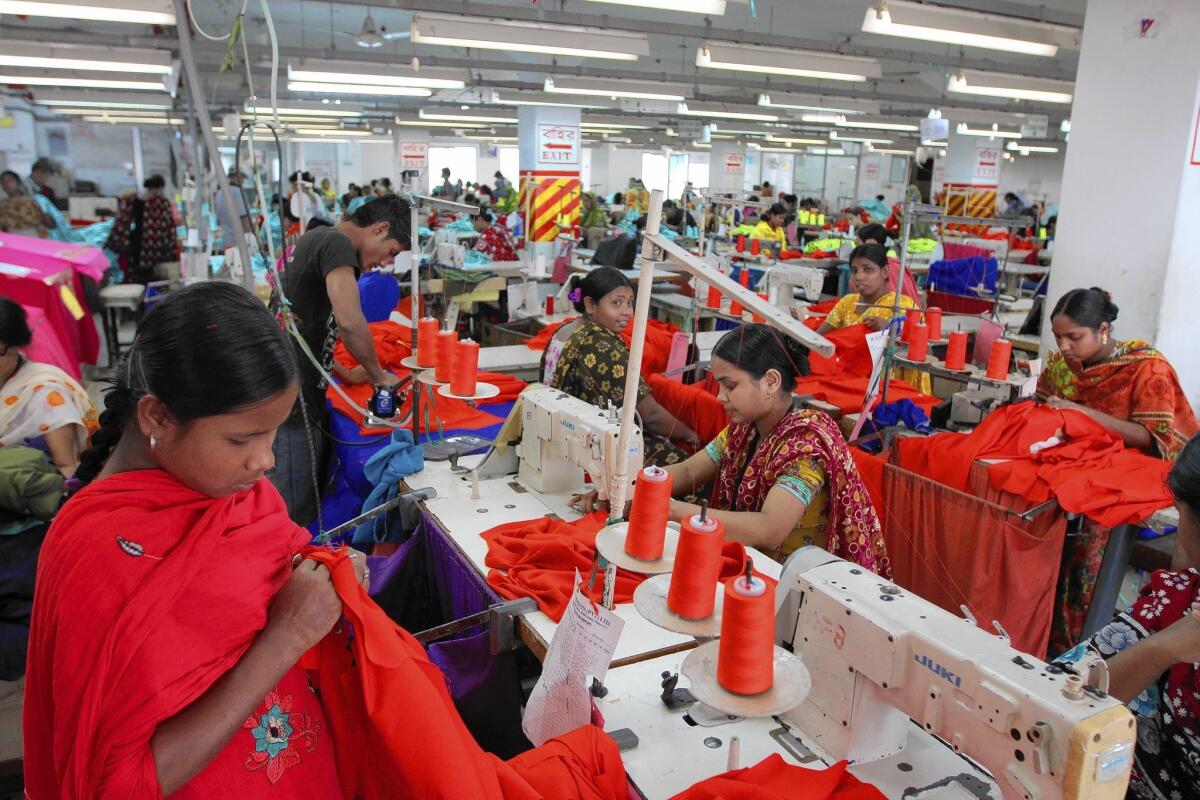
Bangladesh's garment industry has earned a reputation for harsh and sometimes lethal working conditions. But the factory jobs have also enabled young girls to make the transition from childhood to adulthood with some independence.
Some adults praise her, she said, because "I'm the only wage earner in the family." Others scold her for taking a job in a factory where men and women work together. It's just not a proper place for a young, unmarried woman to be, they lecture.
But when she steps off the bus, younger village girls dance around her. "They see me as a role model," Hazi said. "I can do whatever I want. I can enjoy myself. I have freedom."
As more women earn money, this shift in economic clout is gnawing at the foundations of one of Bangladesh's stubbornly enduring traditions. An estimated 60% of girls here marry before 18, the legal age for marriage. There's evidence that girls lie about their age to registrars, and there's little enforcement of laws against underage marriages. Most marriages are arranged by parents, who engage in a related practice that also violates the law but is rarely enforced: paying a dowry.
The dowry system skews toward marrying off daughters early, said Amin, the Population Council demographer who was born and raised in Bangladesh.
"We've been able to show very clearly that there's a premium on young girls in terms of how they are valued in looks and malleability," Amin said. "The older your daughter is, the more her worth goes down and you have to compensate with a larger dowry."
Garment factory jobs have begun to undercut this long-standing custom, as parents — sometimes the daughters also speak up for themselves — challenge how much, if any, dowry is required when the bride-to-be earns a steady salary.
"These women aren't rejecting arranged marriages," Amin said. "They want to get married, but later. They want to bear children, but at the right time."

As the garment industry has grown and matured, so has its workforce, which now has seamstresses in their 30s and 40s.
My life is much better than theirs because they have no freedom. When I go back to my village and see my friends, they ask me, ‘Can you take us with you? ”— Mukhta Mollah
Today, about half of the female factory workers are married, joining a permanent urban migration that swelled the size of Dhaka, Chittagong and other cities. These working women tend to have smaller families, often just one or two children, which has helped Bangladesh slow the growth of its population, now at 160 million. Many of them live in Dhaka's fast-growing slums, raising families in shanties without running water or sanitation.
Six mornings a week, the streets around Beauty Garments and other factories are awash with women in brightly colored outfits walking briskly to make it to their workstations by 8 a.m.
That's quite a change from the 1970s, before the garment industry took hold here. Unmarried women were not allowed out in public without an escort, to protect them and their families' honor. Young women had no reason to leave the home, unless it was to work in nearby farm fields. Over time, the factory jobs have given women a legitimate reason to be seen on the street.
The four roommates love their autonomy, they said, especially their ability to come and go as they please. All of them expect to get married, but have no immediate plans to do so.
Mollah said her father is healthy again and has returned to his rice fields. The family no longer depends on money from her, but she has stayed on to pay for the education of her younger sister, who has a stuttering problem.
"I don't see it as a sacrifice," Mollah said, pushing fabric through her sewing machine that she expertly controls with a foot on a pedal. "I really care for my sister. If she gets a good education, she will not have a problem getting a husband."
Mollah hopes to stay at the factory for another four years to master her sewing skills and save some money. She likes her city life but will defer to her mother and father on her future: "I leave the decision to my parents when to get married."
Kenneth R. Weiss is a former Los Angeles Times reporter who was a co-winner of a Pulitzer Prize for a series on the world's distressed oceans. The reporting in Bangladesh was supported by a grant from the Pulitzer Center on Crisis Reporting.
Follow @latgreatreads on Twitter
More great reads
In Ukraine, the jobless replace the revolutionaries
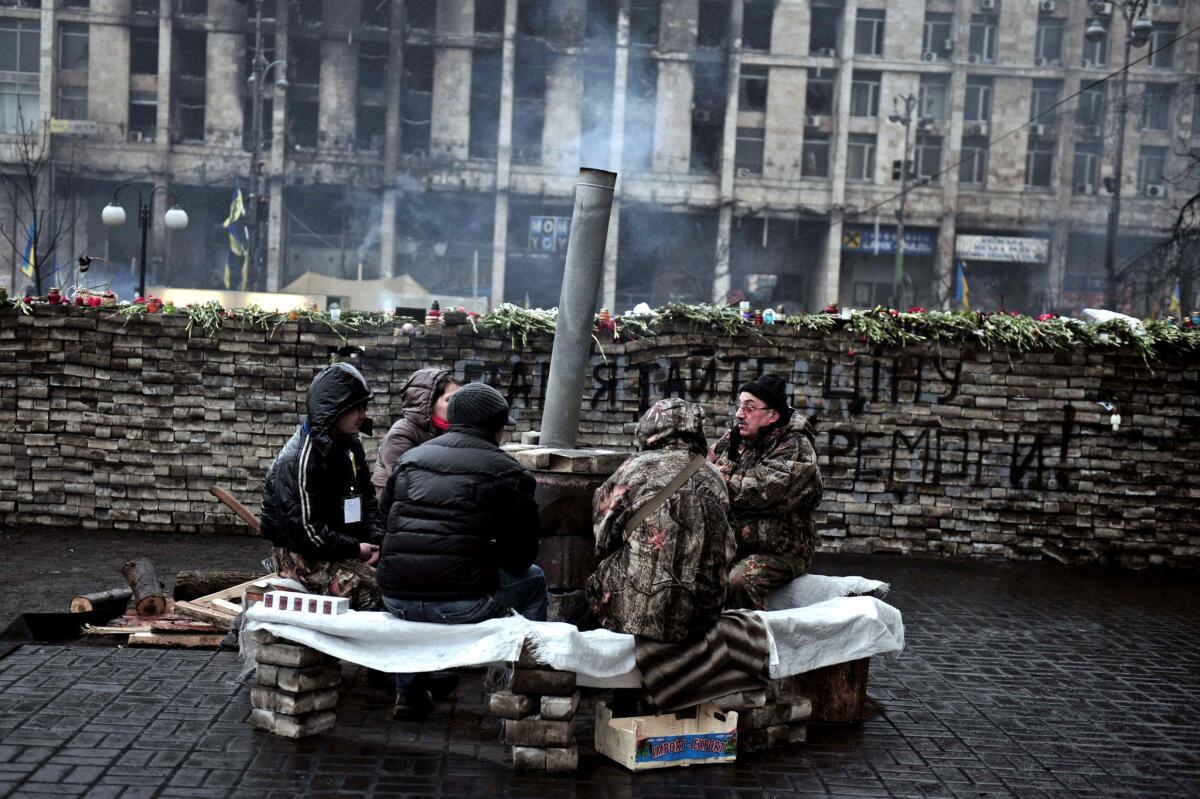
Meet Chesterfield Square’s peacekeeper
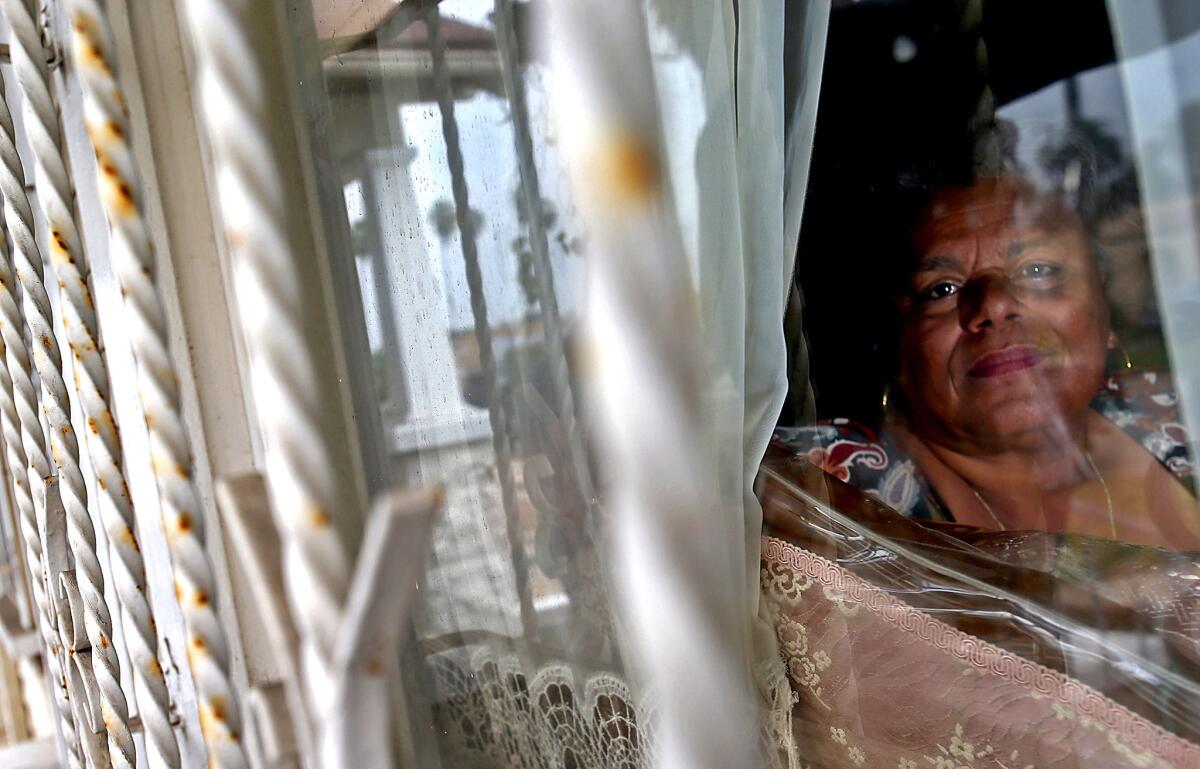
Sign up for Essential California
The most important California stories and recommendations in your inbox every morning.
You may occasionally receive promotional content from the Los Angeles Times.
